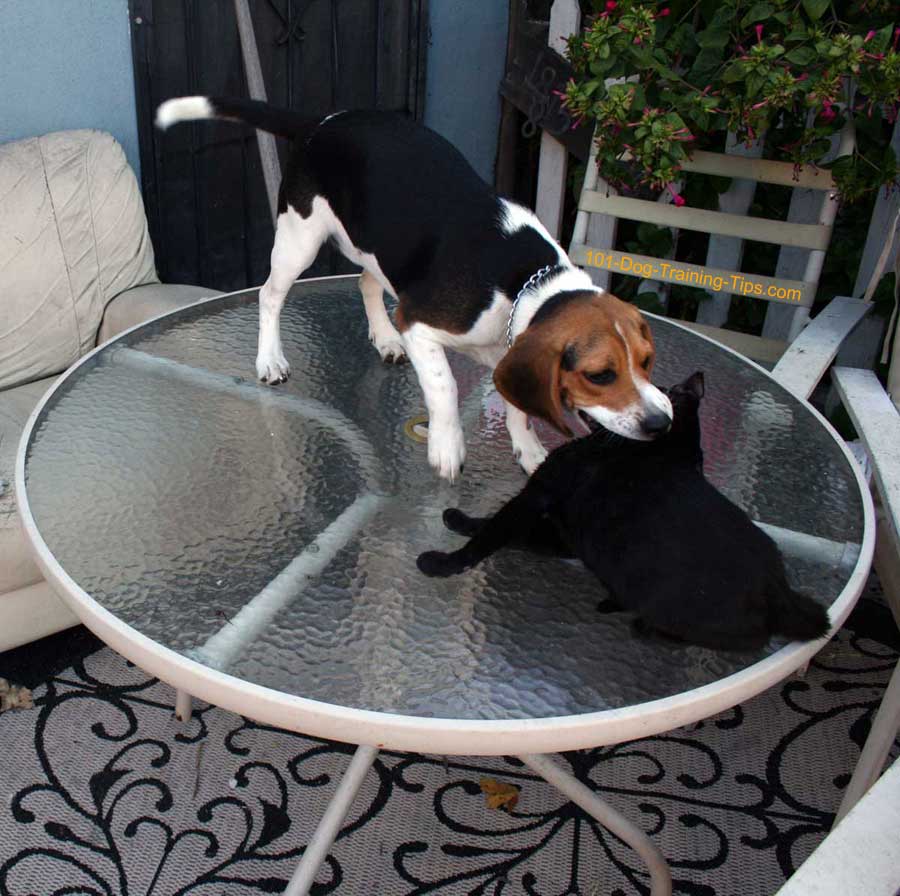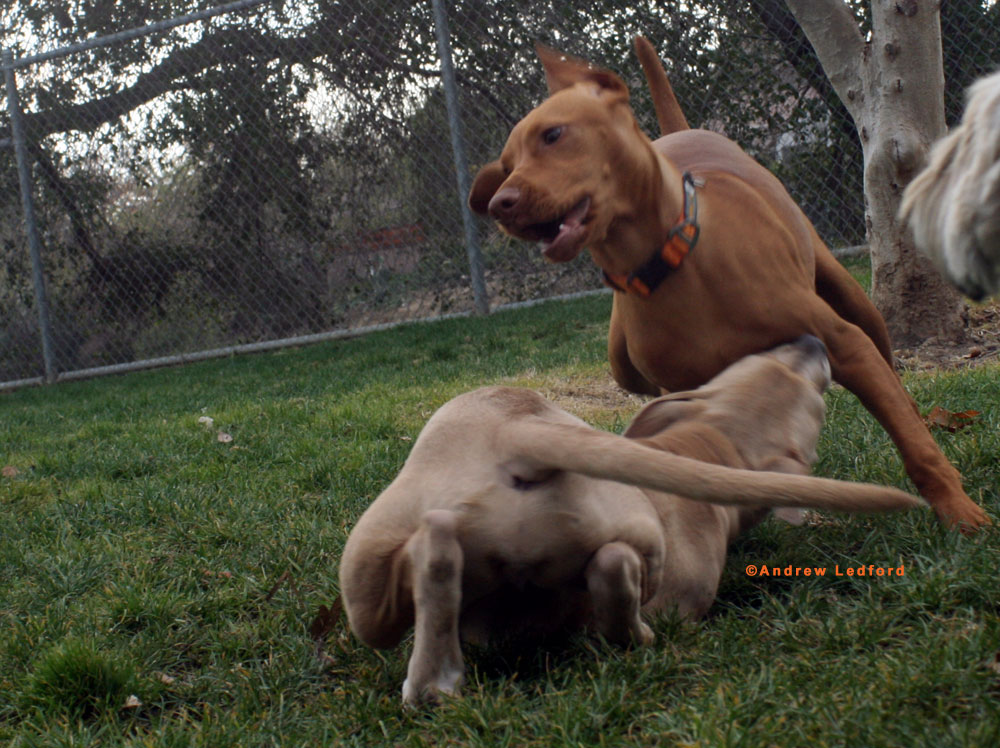Puppy Training and Play Biting
Training By Andrew Ledford
714-827-4058
Puppy Training and Play Biting – this page was originally published on my old 101 Dog Training Tips website
Puppy Biting
Puppy biting, play biting, and social mouthing can be an annoying and sometimes painful problem. Here are some useful tips to be aware of when trying to overcome and deal with this behavior.
Play biting or social mouthing is a natural behavior for dogs. Since dogs don’t have hands like people do they use their mouths to pick things up.

A dog’s mouth is designed to be particularly good at grabbing and holding. In wild dogs play biting had a good deal of survival value attached to it. In fact domestic dogs learn important Life Skills through play biting, just as wild dogs do.
Dogs learn many social rules through play. Play biting teaches bite inhibition, social status, to be pushy, easygoing, or fearful, appeasement behavior, and how to respond to appeasement behavior.
In my professional dog training practice I use a many faceted approach to preventing or correcting problems associated with play biting.
It’s best to start by avoiding activities that encourage unacceptable mouthing.
One activity that greatly increases a dog’s desire to grab and bite is tug. Until the dog has developed appropriate social skills, such as bite inhibition and knows a command for don’t touch (I use “off”) do not play tug. This is a general rule, and like all rules there are exceptions. If you think your dog is an exception to the rule, talk to a professional trainer or behaviorist for advice.
The next activity to avoid is roughhousing and wrestling. Again, these activities can heighten the dog’s natural tendencies to grab at hands, arms, feet, and your face. There are exercises designed to increase the dog’s good behavior when roughhousing, but they have a well-defined structure. The structure gives these play sessions rules to make the behavior move in a desired direction.
Puppy biting can often be avoided with proper dog handling practices.
When interacting with your puppy or dog don’t make quick movements around the dog’s face. This could be deliberate such as teasing the dog, or it could be unintentional such as withdrawing your hand quickly as the puppy’s mouth moves toward you. If you have an orally oriented puppy, it may be prudent to avoid putting your hands or face in or near your puppy’s face.
The next thing to consider is don’t reward mouthing, snapping, or grabbing behavior. An example is a puppy that grabs at its leash and owner, while getting ready for a walk. In this scenario don’t reward the pup for grabbing and play biting with a walk. If your puppy is very intense you will need to break this association of biting with the leash and walks. Try getting the pup to hold a chew toy or look into formal dog training.
Now that you are not encouraging mouthing, you will start to find times when the dog would like to mouth but chooses not to. DON’T IGNORE GOOD BEHAVIOR, INSTEAD REWARD IT. Some good rewards are food and playing retrieve.
To get the most benefit from playing retrieve, your dog should learn to get its retrieve toy on command. This way when your pup starts to get mouthy you can give it something else to do. It’s much more effective to have your dog get its toy, than for you to give the toy to the dog for mouthing.
An exercise that can be effective for controlling social mouthing is sending the puppy (the biter) away from the person (the bitee). Two of these exercises that are commonly taught are “place” sending the pup to its bed, rug, or crate, and “out” to send the dog outside.
A somewhat similar approach is for you to leave the puppy. When the puppy is too mouthy, terminate the social interaction and ignore the dog. This is a good general rule, people initiate and terminate interaction with the dog.

Puppy Biting And Play Go Together. Teach you pup not to bite hard and to stop biting on command.
Puppy Biting And Play Go Together. Teach you pup not to bite hard and to stop biting on command.
With puppies that are extremely mouthy avoid physical contact during times of the day when the pup is most active. Instead play retrieve or ignore the pup, or just let it run. The exception to this is if you are in a formal training program with the pup and you have specific training exercises to use at this time.
Don’t encourage your pup to grab at toys by holding them just out of the dog’s reach.
“Puppy Guide to Potty Training and Dog Care” by Andrew Ledford ©copyright 1998 This was originally displayed on 101-dog-training-tips.com with permission from Andrew Ledford. Yes that is me and I am moving all the 101-dog-training-tips to this site
Bite inhibition
The first thing to consider in teaching bite inhibition is the avoidance of games that teach a puppy to bite its owner hard. The two games most detrimental to bite inhibition are tug (especially when the dog wins the toy) and roughhousing. Both of these games can teach your dog to bite you harder. The best game you can play with your pup is fetch.
Puppy training teaches many other skills needed to live a civilized life.
In-home puppy training programs usually last 5 sessions and are done over a 6 to 11 week period. The first session is between one and a half to 3 hours long.
Get started today and ensure your puppy’s happy future.
Start enjoying the benefits of a win-win relationship with your puppy….
Call 714-827-4058 today
Andrew Ledford
